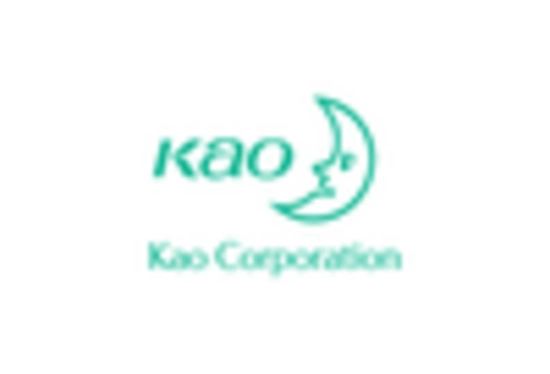Growing Infrastructure Development
The Lignosulfonate Based Concrete Admixtures Market is poised for growth due to the ongoing infrastructure development initiatives worldwide. Governments and private sectors are investing heavily in infrastructure projects, including roads, bridges, and buildings, which necessitate the use of high-quality concrete. Lignosulfonate based admixtures are gaining traction as they enhance the properties of concrete, making it suitable for various applications in infrastructure. The market is projected to witness a surge in demand as these projects require materials that can withstand harsh environmental conditions. Furthermore, the increasing urbanization and population growth are driving the need for robust infrastructure, further propelling the adoption of lignosulfonate based concrete admixtures. This trend suggests a promising outlook for the market in the coming years.
Enhanced Performance Characteristics
The Lignosulfonate Based Concrete Admixtures Market benefits from the enhanced performance characteristics of lignosulfonate-based products. These admixtures improve the workability, strength, and durability of concrete, which is crucial for modern construction demands. The ability of lignosulfonates to act as plasticizers and water reducers allows for the production of high-performance concrete with lower water-cement ratios. This is particularly relevant in regions where high-strength concrete is required for infrastructure projects. Market data indicates that the use of lignosulfonate based admixtures can lead to a reduction in water usage by up to 30%, thereby optimizing resource efficiency. As construction projects increasingly require materials that meet stringent performance standards, the demand for lignosulfonate based solutions is expected to rise.
Regulatory Support for Sustainable Practices
The Lignosulfonate Based Concrete Admixtures Market is benefiting from regulatory support aimed at promoting sustainable construction practices. Governments are implementing policies and regulations that encourage the use of environmentally friendly materials in construction. This regulatory framework is fostering a favorable environment for the adoption of lignosulfonate based admixtures, as they align with sustainability goals. Incentives for using green materials and stricter regulations on carbon emissions are driving construction companies to seek out lignosulfonate based solutions. As these regulations become more prevalent, the market for lignosulfonate based concrete admixtures is expected to expand, reflecting a broader commitment to sustainable development in the construction sector.
Technological Innovations in Concrete Production
The Lignosulfonate Based Concrete Admixtures Market is influenced by technological innovations in concrete production processes. Advances in manufacturing techniques and formulation technologies have led to the development of more efficient and effective lignosulfonate based admixtures. These innovations not only improve the performance of concrete but also enhance the ease of use for construction professionals. For instance, the introduction of new mixing technologies allows for better dispersion of lignosulfonates in concrete, resulting in superior performance characteristics. As the construction industry continues to embrace modern technologies, the demand for innovative lignosulfonate based solutions is likely to increase. This trend indicates a shift towards more sophisticated construction practices that prioritize efficiency and quality.
Rising Demand for Eco-Friendly Construction Materials
The Lignosulfonate Based Concrete Admixtures Market is experiencing a notable increase in demand for eco-friendly construction materials. As environmental concerns gain prominence, construction companies are increasingly seeking sustainable alternatives to traditional concrete admixtures. Lignosulfonates, derived from lignin, are renewable and biodegradable, making them an attractive option. The market for lignosulfonate based admixtures is projected to grow at a compound annual growth rate of approximately 5% over the next few years. This shift towards sustainability not only aligns with global environmental goals but also enhances the reputation of construction firms committed to reducing their carbon footprint. Consequently, the adoption of lignosulfonate based products is likely to expand as more stakeholders prioritize eco-friendly solutions in their projects.


















Leave a Comment